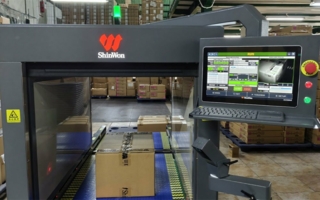31/08/2023 – Kornit Digital Europe
Benefits of a digital supply chain
The fashion and textile industry faces significant challenges in terms of sustainability and efficiency, with an analog supply chain that`s slow-moving and wasteful. It contributes substantially to carbon emissions and generates massive textile waste.
The repercussions of its slow-moving practices are felt worldwide, as fashion and textiles account for 10% of global carbon emissions, while over 85% of textiles produced end up in dumpsters. Despite the mounting call for change, the industry has been slow to evolve, with reports even suggesting a regression in sustainability efforts over the past two decades.
Amid this backdrop of urgent need for transformation, a new digital era is emerging, one led by cultural shifts and a digital-native generation that values immediacy, personalization, and sustainability. This transformation is not limited to fashion but is sweeping across creative industries, from music to art, redefining consumer expectations and production paradigms. The rise of the creator economy, fueled by platforms like TikTok, has created a demand for products that can keep pace with rapidly changing trends and individual preferences.
In this changing landscape, digital technologies are revolutionizing the way fashion is conceived, created, and delivered. From on-demand production to blockchain-backed traceability, the digital supply chain is disrupting the traditional fashion model, promising agility, sustainability, and responsiveness. Companies like Kornit Digital are said to be at the forefront of this revolution, enabling on-demand production that aligns supply with demand, reducing waste, and fostering customization. This digital transformation not only meets the cultural zeitgeist but also presents an opportunity for retailers to thrive in an increasingly web-driven retail environment. Recently, Kornit Digital attended a popular fashion and textile sourcing event in New York. During one very insightful panel, William Brenninkmeyer, Global Sourcing Manager and Lead of Innovation at C&A, noted, “Chasing trends is impossible with an analog supply chain, where the lead time is 6-8 months. But digital production technologies now enable on-demand fulfillment, so you can bring concepts to production to consumer in two days. It’s incredible.”
Legacy brands like Nike and Gucci are also embracing digital technologies such as NFTs and AI to adapt to this cultural shift. The fashion industry is finally catching up with the speed of digital culture, enabling more efficient, sustainable, and responsive production processes. The path forward for each company may vary. The key lies in adopting digital solutions that best suit unique needs and market positioning. This flexibility allows brands to reduce risk and maximize profitability in the globalized marketplace.
(Source: Byline “Moving at the Speed of Culture … The rise of a Digital Supply Chain” written by Chris Govier, President at Kornit Digital Europe)





